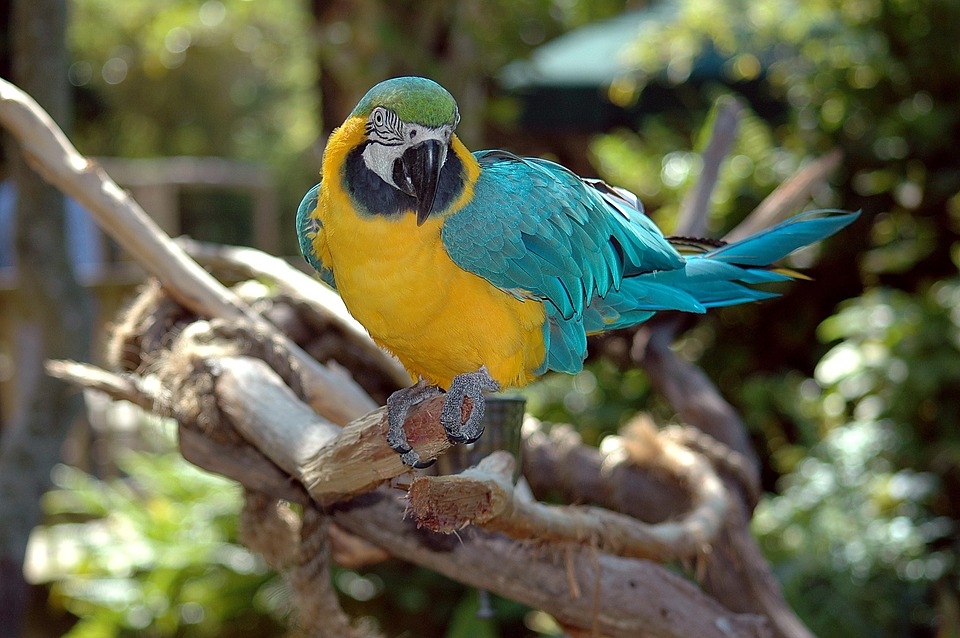Understanding Parrot Behavior: How Ladders and Swings Impact Their Well-being
Introduction:
Parrots are fascinating creatures known for their vibrant plumage and their ability to mimic human speech. However, understanding their behavior is key to ensuring their well-being. In this article, we will delve into the impact of ladders and swings on parrot behavior and explore how these enrichments can positively affect their overall mental and physical health.
I. The Importance of Enrichment for Parrots
A. The natural habitat vs. captivity
Parrots are highly intelligent and active birds that thrive in their natural habitat, where they have access to a variety of stimuli and opportunities for physical and mental engagement. However, when kept in captivity, they may lack these enriching experiences. This is where the role of enrichment comes in.
B. The role of enrichment in combating boredom and stress
Enrichment refers to providing parrots with opportunities to engage in natural behaviors, mental stimulation, and physical activity. Enrichment is crucial in combating boredom and stress, which can lead to various behavioral issues in parrots, such as feather plucking, excessive screaming, and aggression.
II. Ladders: Vertical Explorations
A. Mimicking tree branches in the wild
In their natural habitat, parrots spend a significant amount of time climbing and perching on tree branches. Ladders in their cages can mimic this vertical exploration, allowing them to exercise their natural climbing instincts.
B. Encouraging exercise and physical activity
Ladders provide parrots with the opportunity to engage in physical exercise, promoting muscle development and overall fitness. Climbing up and down ladders can also help prevent obesity, a common health issue in captive parrots.
C. Promoting cognitive development through problem-solving
Ladders can serve as a mental challenge for parrots, as they require problem-solving skills to navigate their way through the rungs. This promotes cognitive development and keeps their minds active and engaged.
III. Swings: A Joyful Experience
A. Simulating movement and flight
Swings simulate the feeling of movement and flight, which is essential for parrots’ well-being. The swinging motion can provide a sense of freedom and simulate their natural flight patterns, thereby reducing stress and promoting a sense of happiness.
B. Providing a sense of security and comfort
Swings can offer parrots a sense of security and comfort as they sway back and forth. This can be particularly beneficial for parrots that may be experiencing anxiety or stress due to changes in their environment.
C. Reducing anxiety and promoting relaxation
The rhythmic motion of swings can have a calming effect on parrots, reducing anxiety and promoting relaxation. This can be especially helpful during times of high-stress situations, such as vet visits or loud noises.
IV. How Ladders and Swings Impact Parrot Behavior
A. Encouraging natural climbing and perching instincts
Ladders and swings allow parrots to engage in natural behaviors like climbing and perching. By providing these opportunities, you are satisfying their instinctual needs and promoting a more fulfilled and contented life.
B. Alleviating boredom and preventing destructive behaviors
When parrots are bored, they may engage in destructive behaviors, such as chewing on furniture or plucking their feathers. Ladders and swings provide mental and physical stimulation, keeping them occupied and less likely to resort to destructive behaviors out of boredom.
C. Promoting social interactions and bonding
Ladders and swings can serve as gathering spots for parrots, encouraging social interactions and bonding between cage mates. Parrots are highly social animals, and these enrichments can provide opportunities for them to engage in natural flock behaviors.
V. FAQs about Parrot Behavior and Enrichment
A. How often should I rotate ladders and swings in my parrot’s cage?
It is recommended to rotate ladders and swings every few weeks to keep your parrot’s environment stimulating and prevent them from getting bored.
B. Can parrots get injured while playing on swings or ladders?
While rare, injuries can occur if ladders or swings are not securely attached or if they are of poor quality. Regularly inspect these enrichments for wear and tear to ensure your parrot’s safety.
C. Should I provide both ladders and swings, or is one enough?
Providing both ladders and swings is ideal as it offers a variety of physical and mental stimulation for your parrot. However, observe your parrot’s preferences and adjust accordingly.
D. My parrot seems uninterested in ladders and swings. What should I do?
Parrots can be picky, so try introducing different types of ladders and swings to find the ones that appeal to your parrot’s preferences. You can also consult with an avian behaviorist for further guidance.
E. Are there any specific safety precautions I should take with ladders and swings?
Ensure that ladders and swings are securely attached to the cage and are made of non-toxic materials. Regularly inspect them for any signs of wear or damage.
Conclusion:
Understanding parrot behavior is crucial for maintaining their well-being in captivity. Ladders and swings can play a significant role in enriching their environment, providing physical and mental stimulation, and preventing boredom and stress-related behaviors. By incorporating these enrichments into your parrot’s cage, you can create a happier and healthier environment for your feathered friend.









